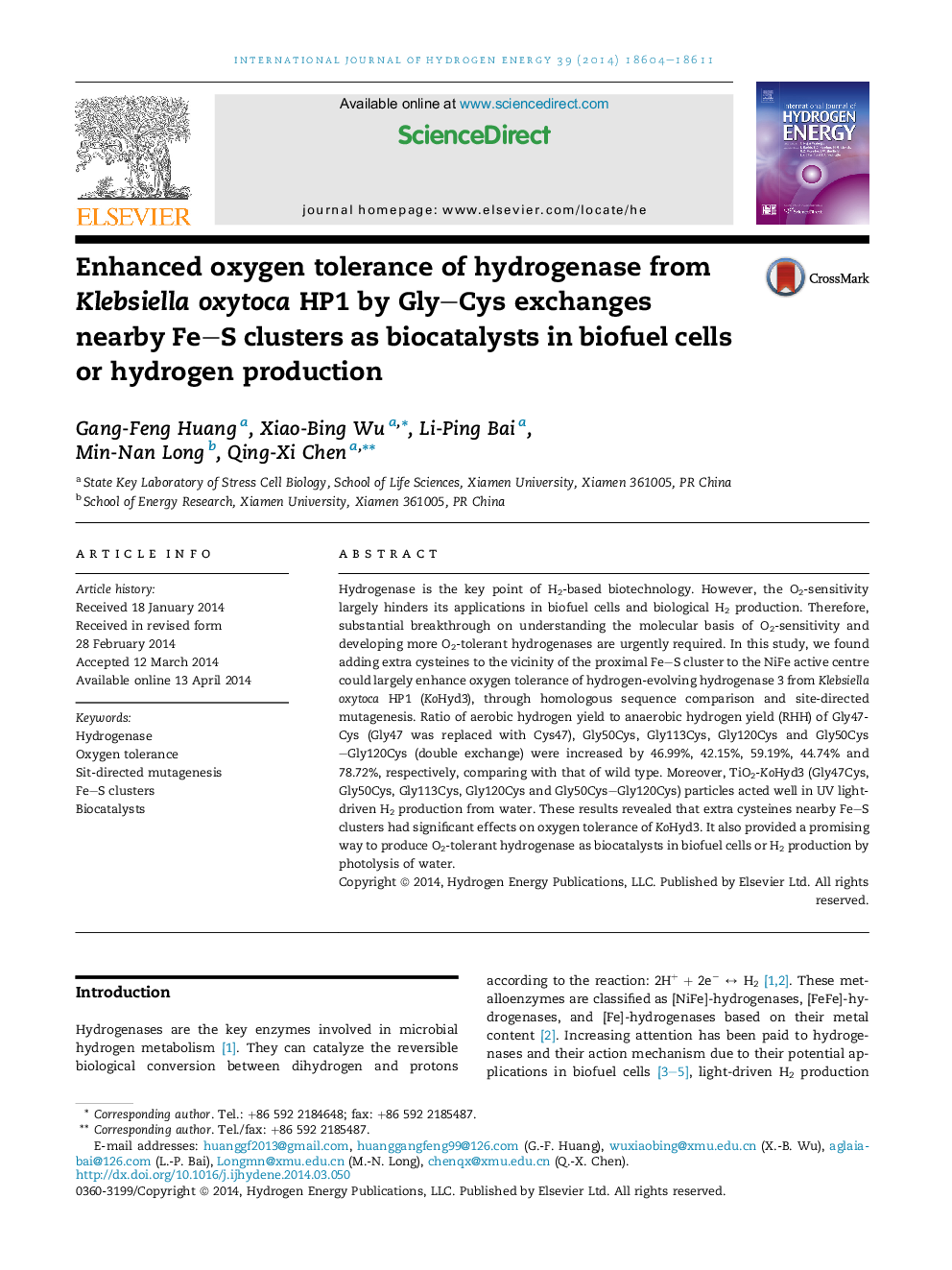| Article ID | Journal | Published Year | Pages | File Type |
|---|---|---|---|---|
| 1280873 | International Journal of Hydrogen Energy | 2014 | 8 Pages |
•Cys nearby Fe–S clusters have significant effects on O2-tolerance of KoHyd3.•Excellent performance of Gly–Cys exchanges in oxygen tolerance.•Developing an efficient way to generate O2-tolerant KoHyd3 as catalysts.
Hydrogenase is the key point of H2-based biotechnology. However, the O2-sensitivity largely hinders its applications in biofuel cells and biological H2 production. Therefore, substantial breakthrough on understanding the molecular basis of O2-sensitivity and developing more O2-tolerant hydrogenases are urgently required. In this study, we found adding extra cysteines to the vicinity of the proximal Fe–S cluster to the NiFe active centre could largely enhance oxygen tolerance of hydrogen-evolving hydrogenase 3 from Klebsiella oxytoca HP1 (KoHyd3), through homologous sequence comparison and site-directed mutagenesis. Ratio of aerobic hydrogen yield to anaerobic hydrogen yield (RHH) of Gly47Cys (Gly47 was replaced with Cys47), Gly50Cys, Gly113Cys, Gly120Cys and Gly50Cys–Gly120Cys (double exchange) were increased by 46.99%, 42.15%, 59.19%, 44.74% and 78.72%, respectively, comparing with that of wild type. Moreover, TiO2-KoHyd3 (Gly47Cys, Gly50Cys, Gly113Cys, Gly120Cys and Gly50Cys–Gly120Cys) particles acted well in UV light-driven H2 production from water. These results revealed that extra cysteines nearby Fe–S clusters had significant effects on oxygen tolerance of KoHyd3. It also provided a promising way to produce O2-tolerant hydrogenase as biocatalysts in biofuel cells or H2 production by photolysis of water.
